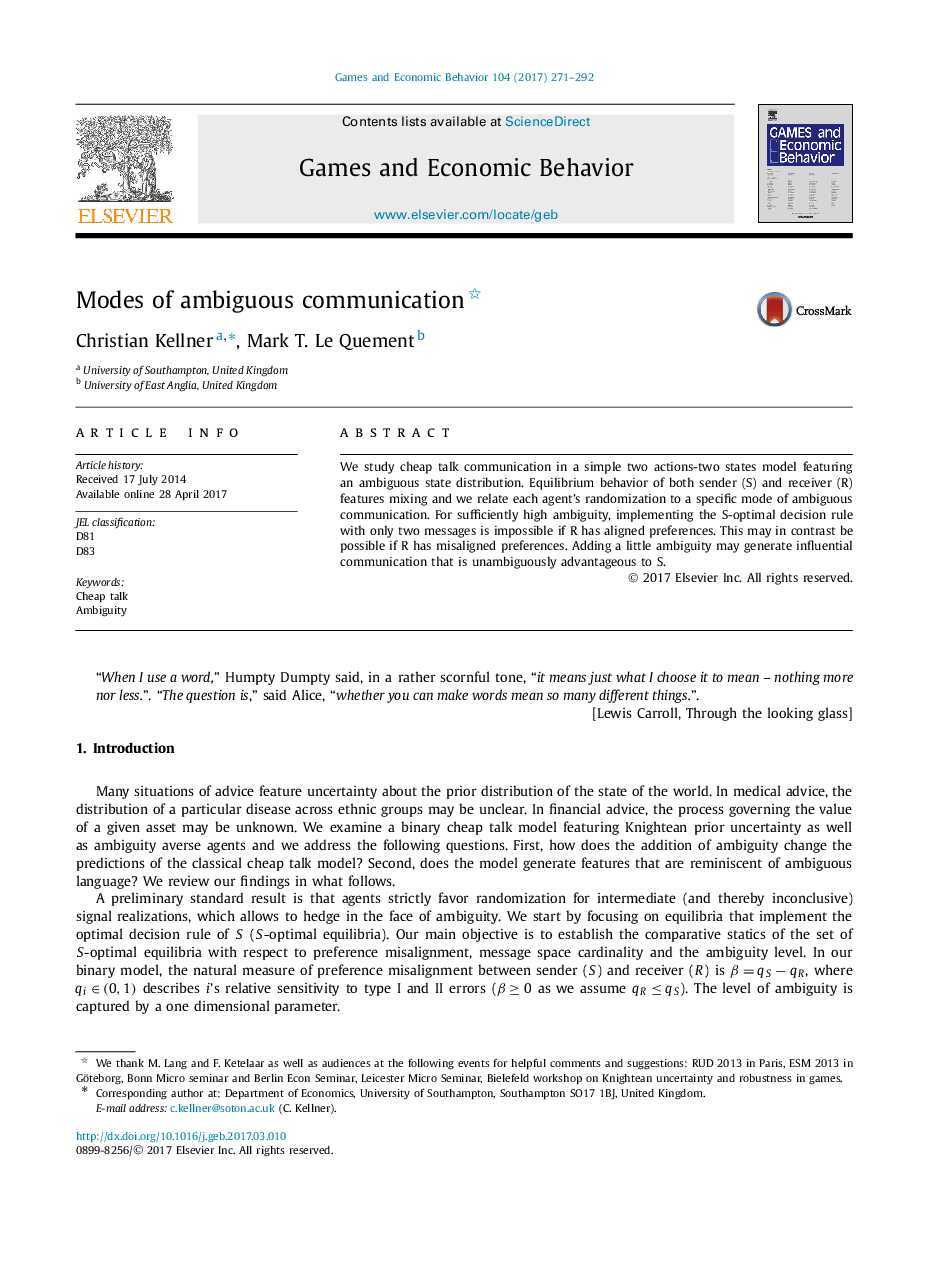| Article ID | Journal | Published Year | Pages | File Type |
|---|---|---|---|---|
| 5071335 | Games and Economic Behavior | 2017 | 22 Pages |
Abstract
We study cheap talk communication in a simple two actions-two states model featuring an ambiguous state distribution. Equilibrium behavior of both sender (S) and receiver (R) features mixing and we relate each agent's randomization to a specific mode of ambiguous communication. For sufficiently high ambiguity, implementing the S-optimal decision rule with only two messages is impossible if R has aligned preferences. This may in contrast be possible if R has misaligned preferences. Adding a little ambiguity may generate influential communication that is unambiguously advantageous to S.
Keywords
Related Topics
Social Sciences and Humanities
Economics, Econometrics and Finance
Economics and Econometrics
Authors
Christian Kellner, Mark T. Le Quement,
